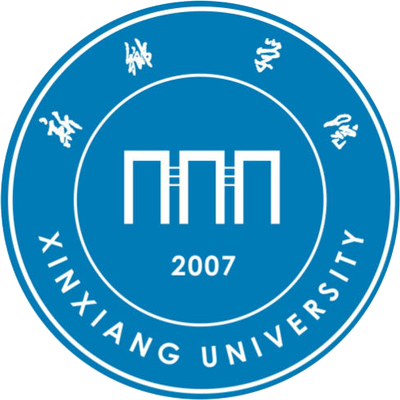详细信息
南京市不同功能区15种园林植物叶片铅、铜、氯、硫质量分数的差异性分析
A difference analysis for Pb, Cu, Cl, and S with 15 species of landscape plant leaves in different functional areas of Nanjing
文献类型:期刊文献
中文题名:南京市不同功能区15种园林植物叶片铅、铜、氯、硫质量分数的差异性分析
英文题名:A difference analysis for Pb, Cu, Cl, and S with 15 species of landscape plant leaves in different functional areas of Nanjing
作者:蔺芳[1];张家洋[1]
第一作者:蔺芳
机构:[1]新乡学院生命科学技术系
第一机构:新乡学院生命科学技术学院
年份:2015
卷号:32
期号:5
起止页码:809-814
中文期刊名:浙江农林大学学报
外文期刊名:Journal of Zhejiang A & F University
收录:CSTPCD;;北大核心:【北大核心2014】;CSCD:【CSCD2015_2016】;
基金:2014年河南省基础与前沿技术研究资助项目(142300410100)
语种:中文
中文关键词:园林植物;功能区;铅;铜;氯;硫
外文关键词:garden plant; functional area; lead; copper; chlorine; sulfur
摘要:为了探究园林植物叶片富集大气污染物的差异性,对南京市化学工业园区(污染区)和南京林业大学(清洁区)不同园林植物叶片铅、铜、氯和硫的质量分数进行了测定并进行了元素累积量和隶属函数值分析。结果表明:污染区植物叶片污染元素与清洁区相比具有显著(P<0.05)或极显著差异(P<0.01);同种园林植物叶片累积4种污染元素的质量分数情况不同,其中枫杨Pterocarya stenoptera,广玉兰Magnolia grandiflora,鸡爪槭Acer palmatum,栾树Koelreuteria paniculata,悬铃木Platanus hispanica和小叶黄杨Buxus sinica的累积情况表现为氯>硫>铜>铅,女贞Ligustrum lucidum,珊瑚树Viburnum awabuki和杨树Populus deltoides表现为氯>硫>铅>铜,国槐Sophora japonica,构树Broussonetia papyrifera,洒金珊瑚Aucuba japonica var.variegata和紫叶李Prunus cerasifera表现为硫>氯>铜>铅,海桐Pittosporum tobira和樟树Cinnamomum camphora表现为硫氯>铅>铜;利用隶属函数法对15种园林植物叶片累积污染元素的能力由高到低进行分类,可划分为3类:第1类为广玉兰、国槐、杨树、构树和枫杨Pterocarya stenoptera;第2类为栾树,紫叶李,鸡爪槭Acer palmatum,悬铃木和海桐;第3类为小叶黄杨、洒金珊瑚、樟树、珊瑚树和女贞。由此可见,园林植物对大气污染物具有一定的吸收净化能力,且污染元素含量依功能区、污染元素和树种的不同具有明显的差异。
To reveal differences in atmospheric pollutants of garden plant leaves, lead (Pb), copper (Cu), chlorine (Cl), and sulfur (S) from Nanjing Chemical Industry Park (contaminated zone) and Nanjing Forestry University (clean zone) were determined and element accumulation and subordinative function value were analyzed. Results indicated that elemental pollutants from plant leaves in the contaminated zone compared with the clean zone had significant (P〈0.05) or extremely significant difference (P〈0.01). The content of four kinds pollution elements with the same garden plant leaves was different, the accumulation in Pterocarya stenoptera, Magnolia grandiflora, A cer palmatum, Koelreuteria paniculata, Platanus hispanica and Buxus sinica showed Cl〉S〉Cu〉Pb, Ligustrum lucidum, Viburnum awabuki and Populus deltoides showed Cl〉S〉Pb〉 Cu, Sophora japonica, Broussonetia papyrifera, A ucuba japonica var. variegata and Prunus cerasifera showed S 〉Cl 〉Cu 〉Pb, Pittosporum tobira and Cinnamomum camphora showed S 〉Cl 〉Pb 〉Cu. Based on the content of four kinds pollution elements from high to low, different garden plants were sorted into three groups by using subordinative function value method: 1 ) M. grandiflora, S. japonica, Populus deltoides, Broussonetia papyrifera, and Pterocarya stenoptera; 2) K. paniculata, Prunus cerasifera, A cer palmatum, Platanus hispanica, and Pittosporum tobira; and 3) Buxus sinica, A ucuba japonica var. variegata, Cinnamomum camphora, Viburnum awabuki, and Ligustrum lucidum. Thus, garden plants for air pollutants had certain absorption and purification ability, and pollution elements content in garden plants leaves show obviously difference depending on function areas, element kinds and tree species. [Ch, 3 tab. 19 ref. ]
参考文献:
![]() 正在载入数据...
正在载入数据...


